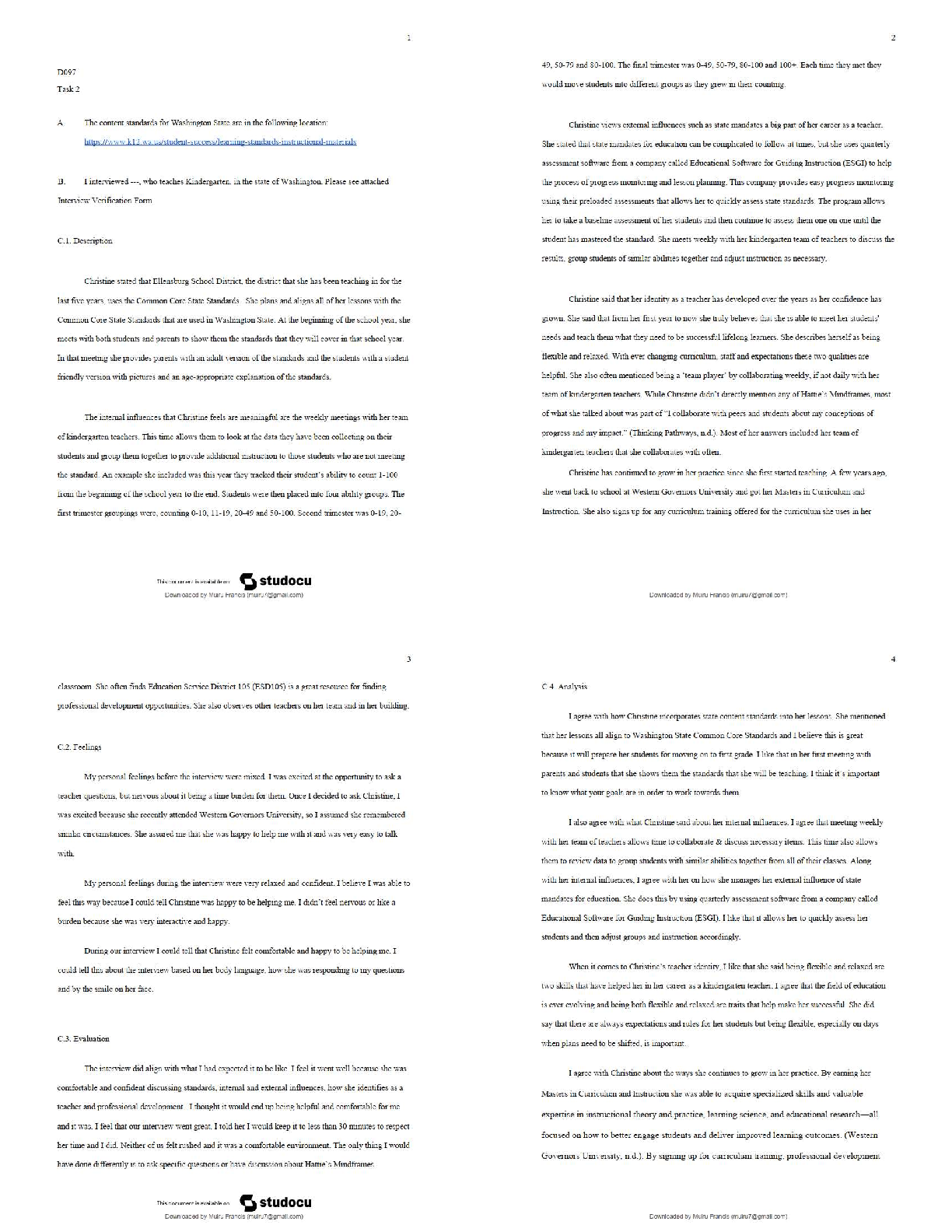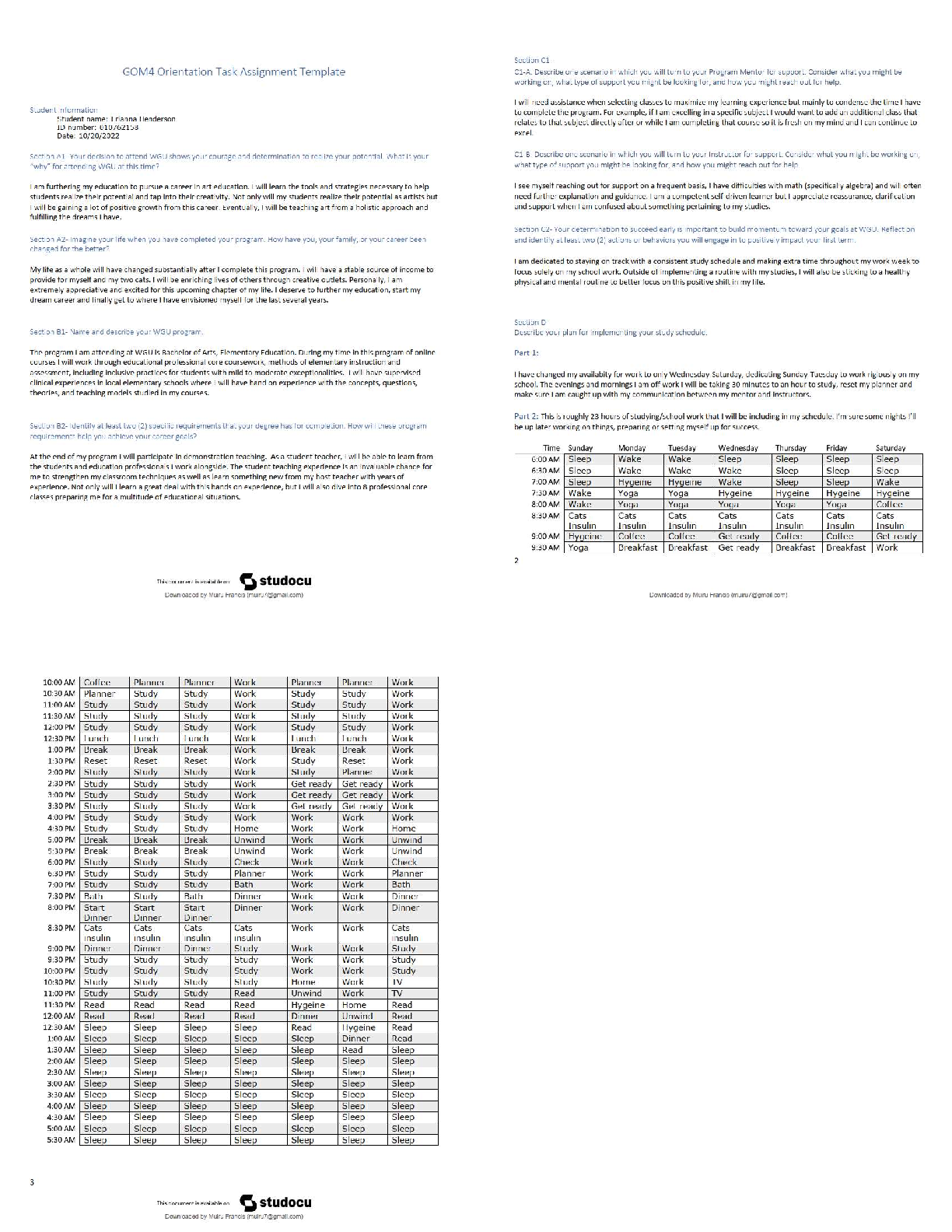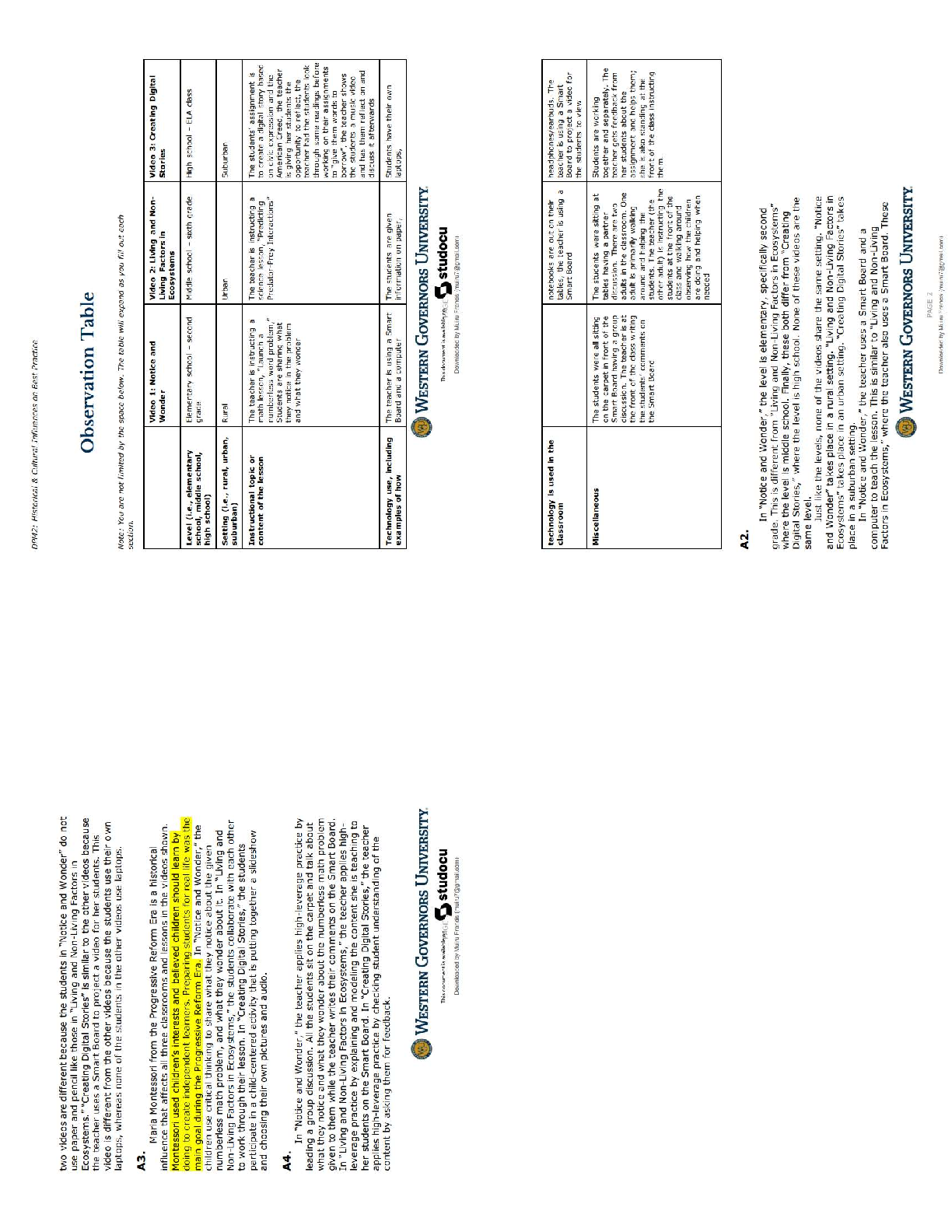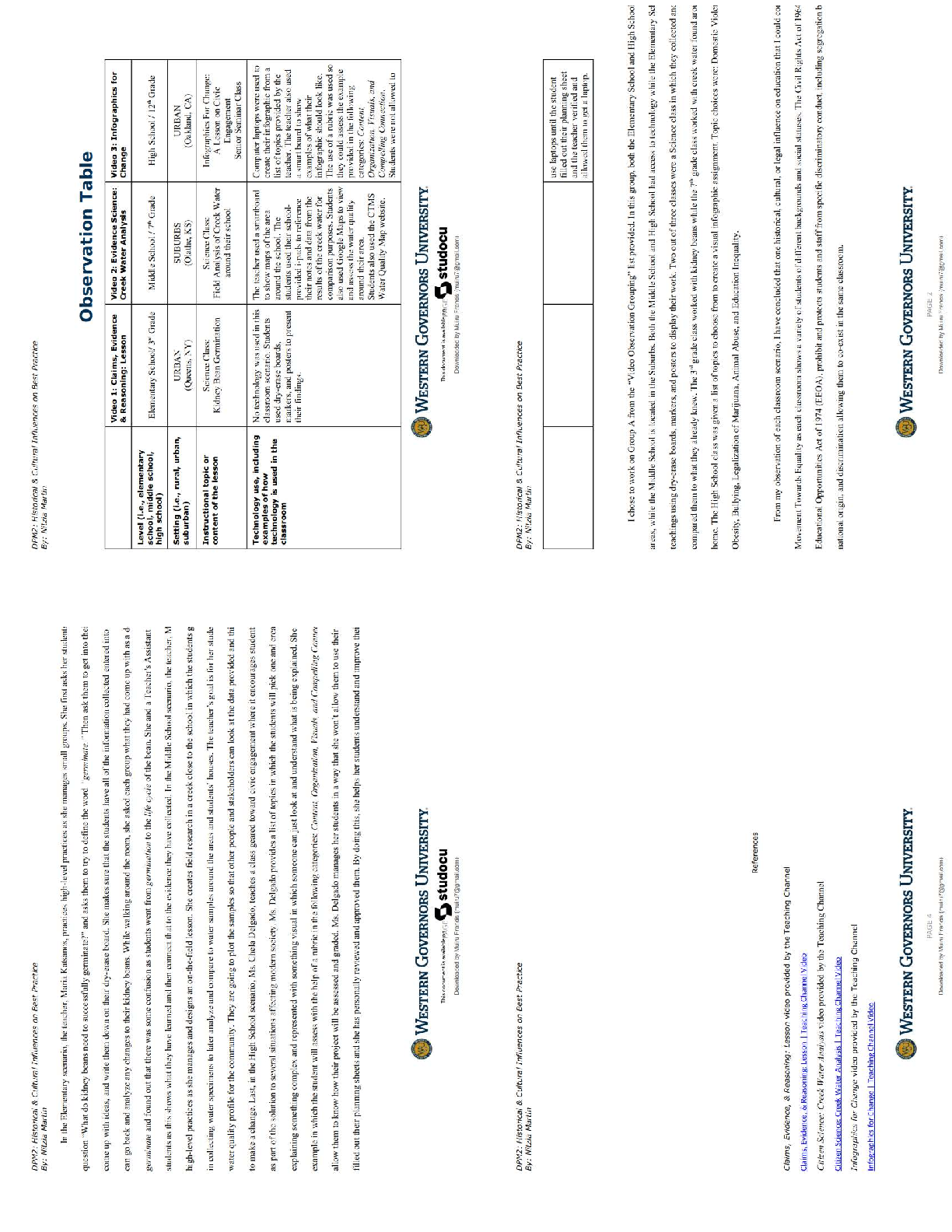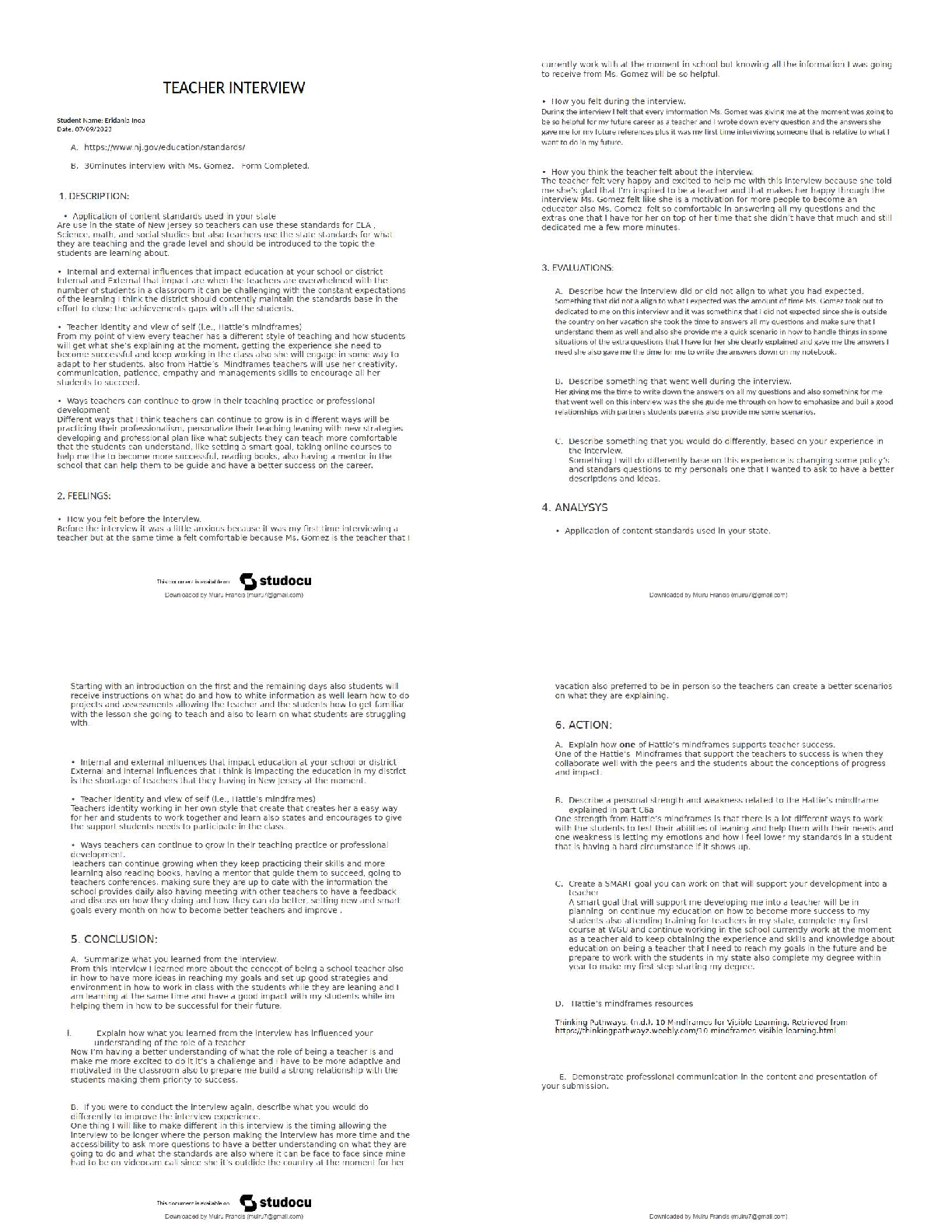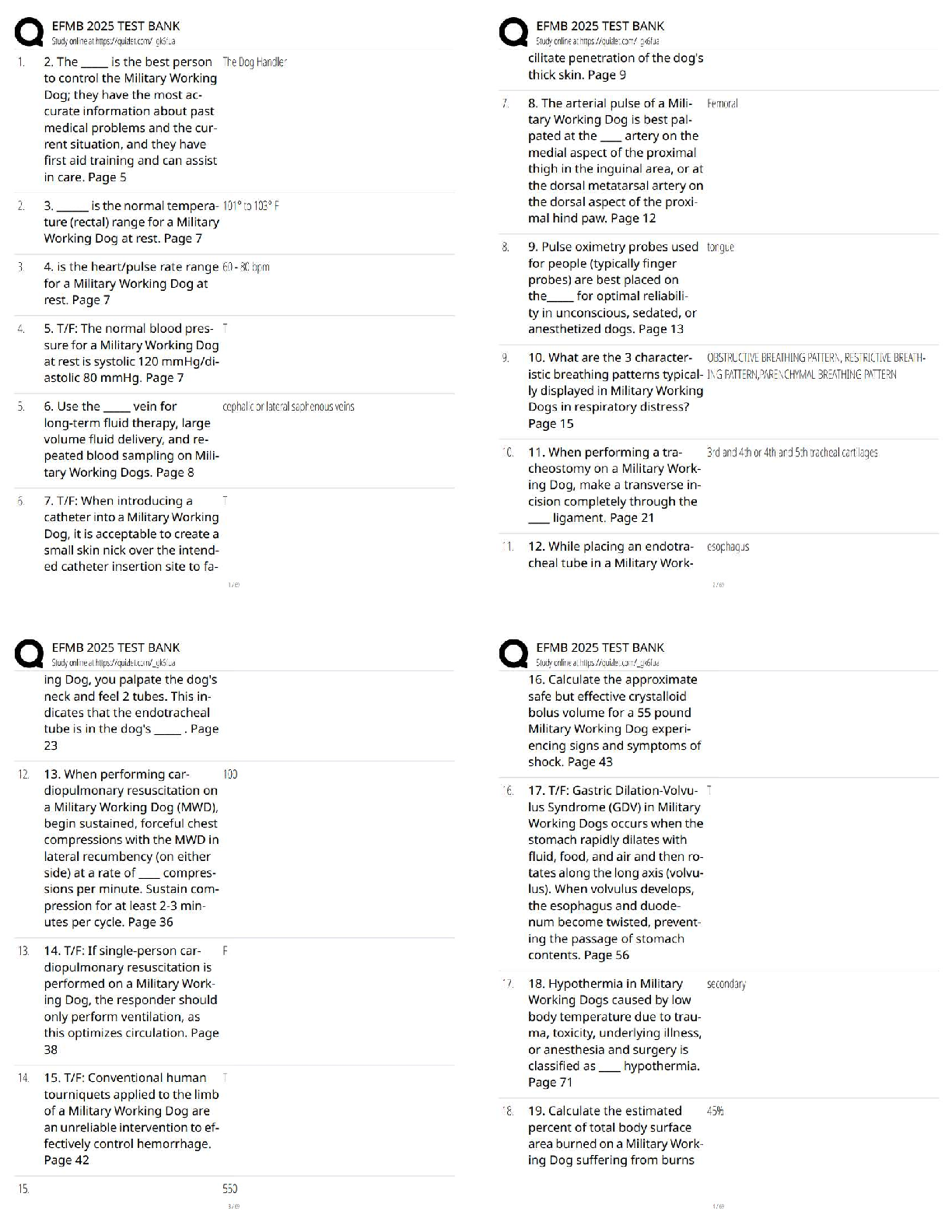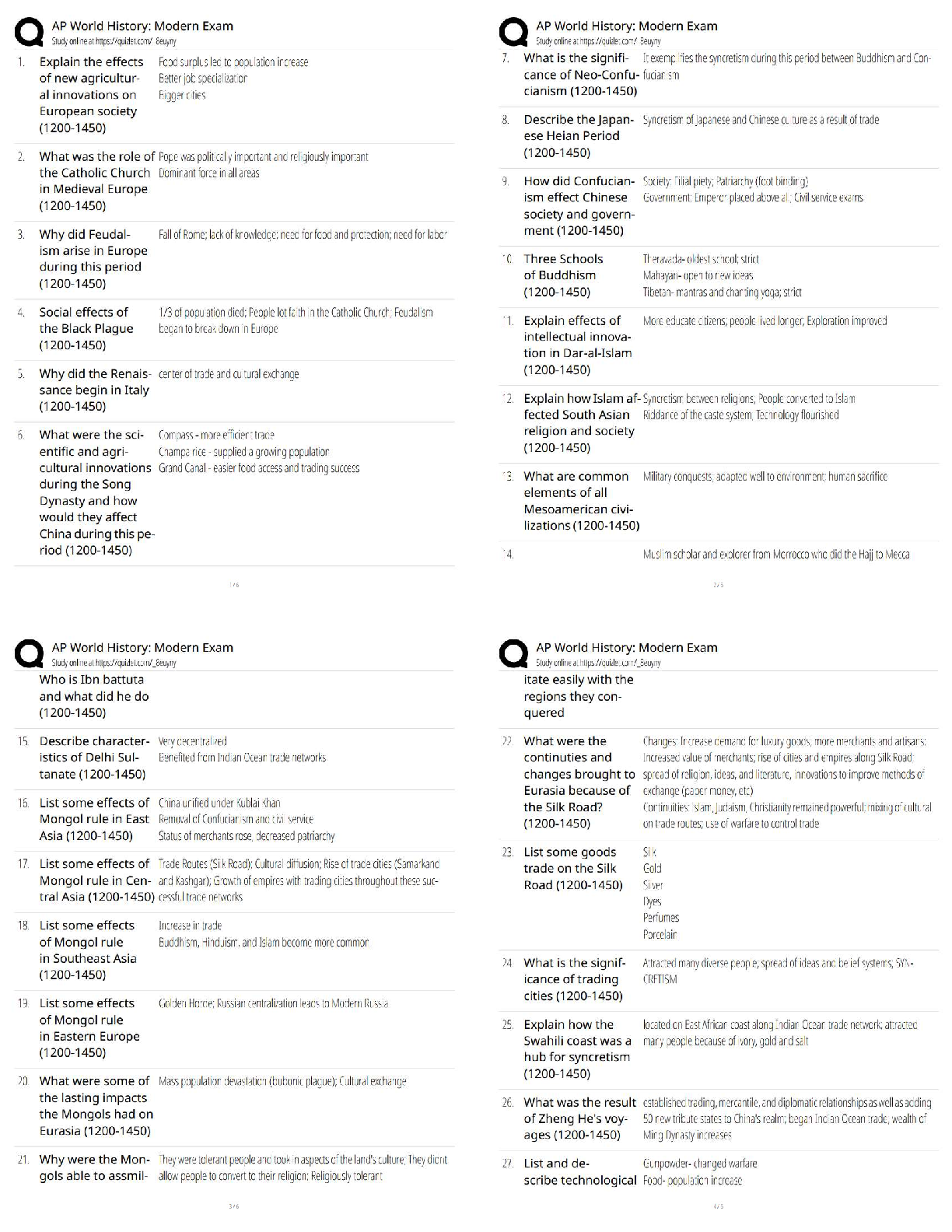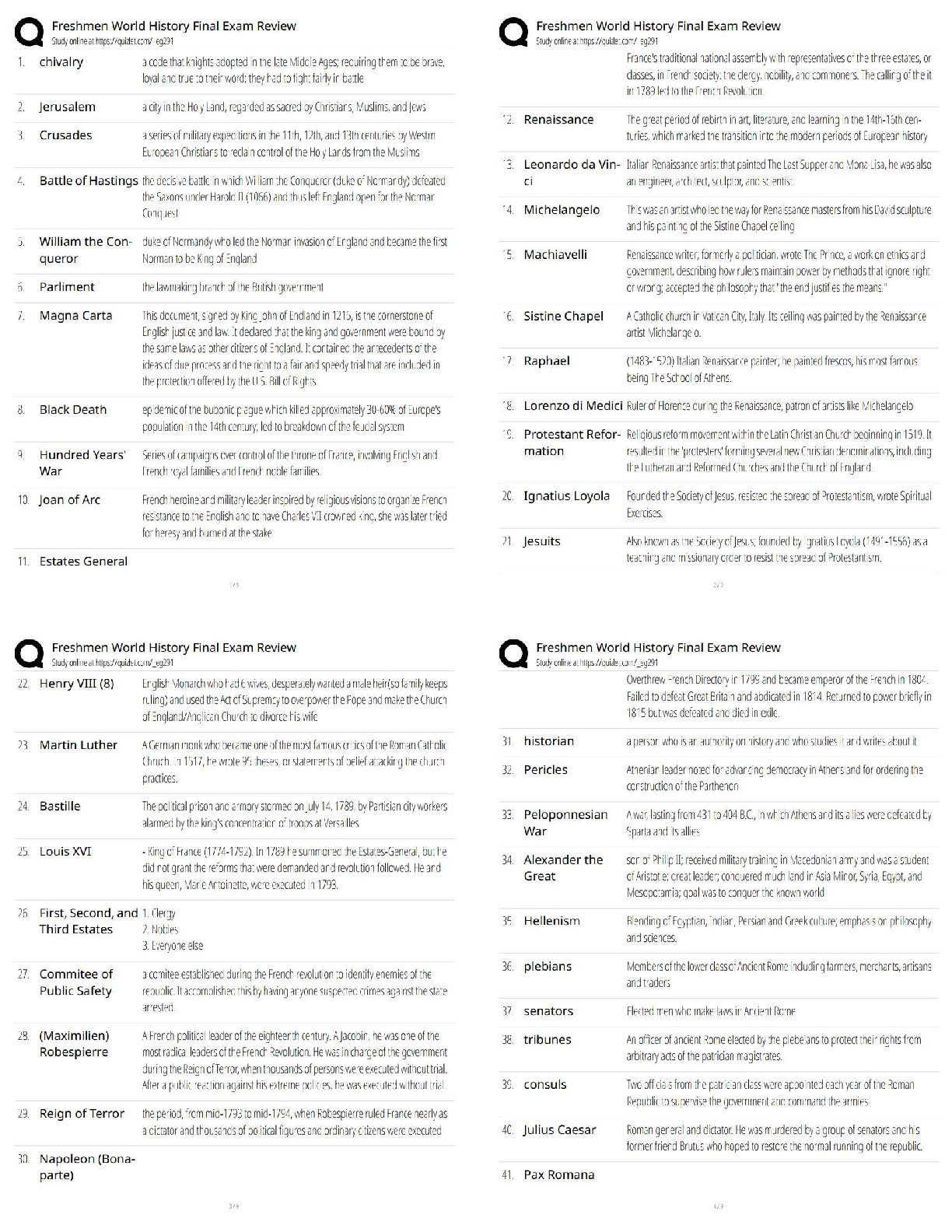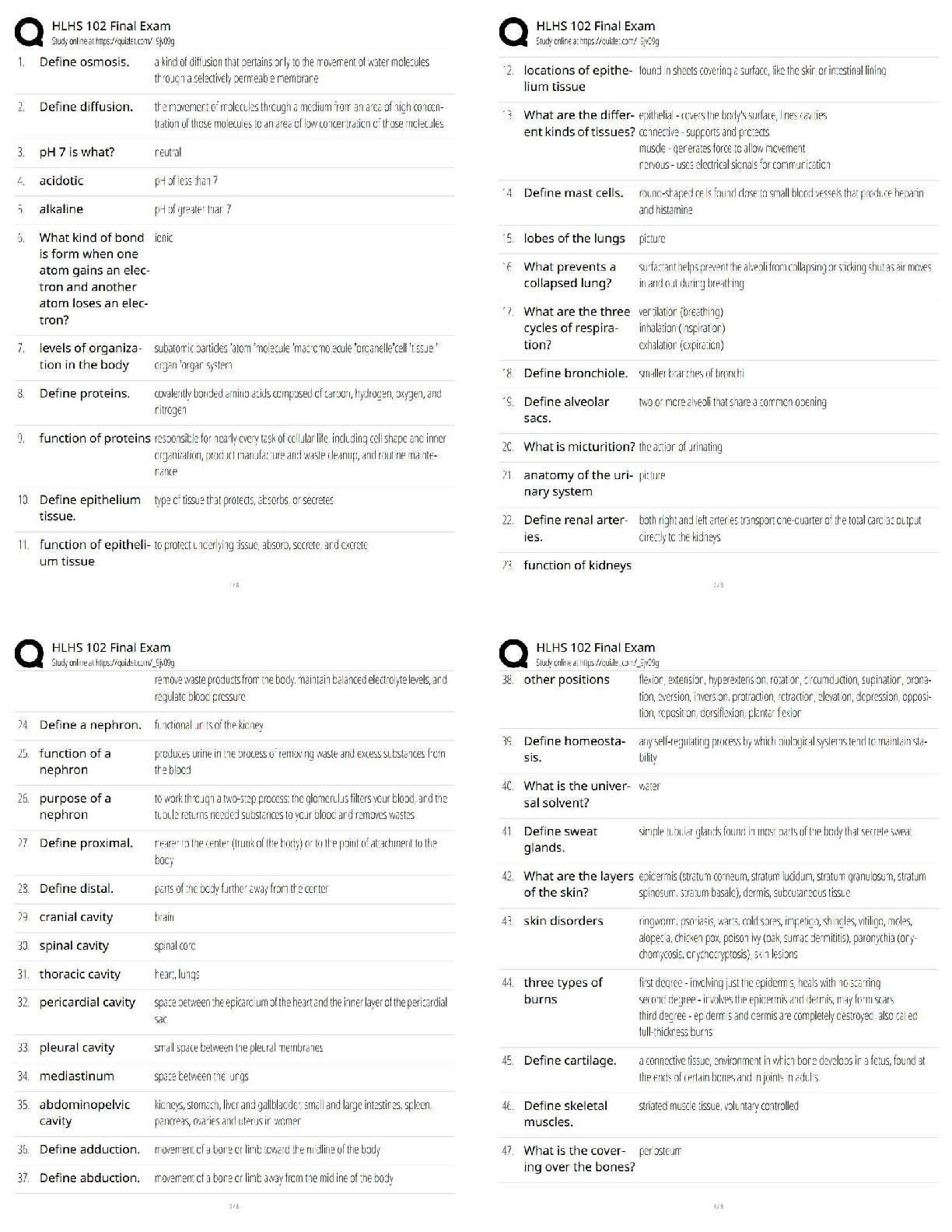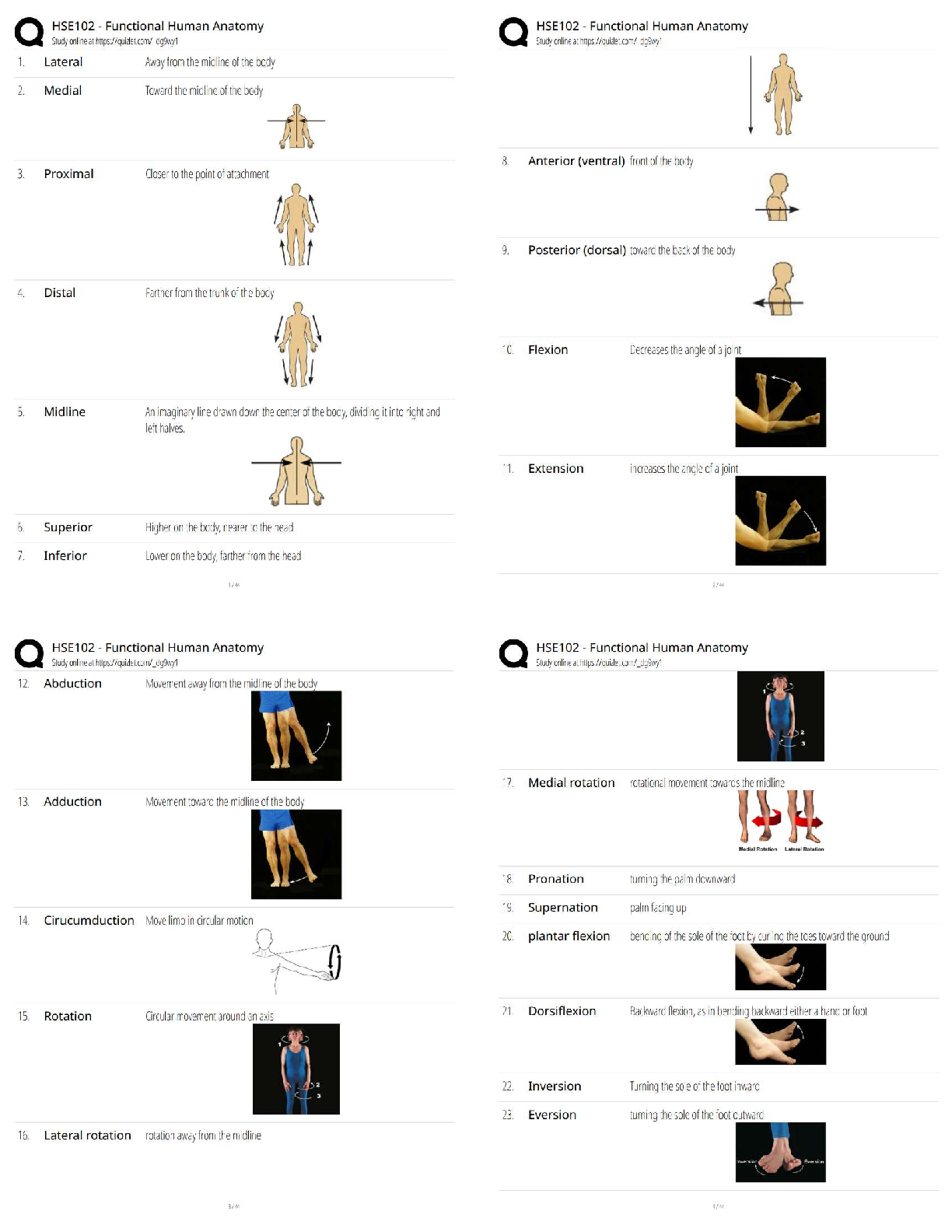Business Law > QUESTIONS & ANSWERS > Chapter 7 Negligence and Strict Liability. All Answers (All)
Chapter 7 Negligence and Strict Liability. All Answers
Document Content and Description Below
Chapter 7 Negligence and Strict Liability N.B.: TYPE indicates that a question is new, modified, or unchanged, as follows. N A question new to this edition of the Test Bank. + A que ... stion modified from the previous edition of the Test Bank. = A question included in the previous edition of the Test Bank. A1. Under the theory of negligence, the duty of care requires an intentional act. F PAGE: 136 TYPE: N NAT: AACSB Analytic AICPA Legal A2. To determine whether a duty of care has been breached, a judge asks how he or she would have acted in the same circumstances. F PAGE: 137 TYPE: = NAT: AACSB Analytic AICPA Legal A3. An ordinary person standard determines whether allegedly negligent conduct resulted in a breach of a duty of care. F PAGE: 137 TYPE: = NAT: AACSB Analytic AICPA Legal A4. A business owner has a duty to use reasonable care to protect its customers against foreseeable risks about which the owner should have known. T PAGE: 138 TYPE: N NAT: AACSB Reflective AICPA Legal A5. The degree of care to be exercised in a situation can vary with a person’s profession or occupation. T PAGE: 139 TYPE: = NAT: AACSB Analytic AICPA Critical Thinking A6. Under the theory of negligence, the duty of care requires one person to come to the aid of another in “peril.” F PAGE: 139 TYPE: = NAT: AACSB Analytic AICPA Legal A7. Causation in fact can be determined by use of the but for test. T PAGE: 139 TYPE: N NAT: AACSB Analytic AICPA Critical Thinking A8. Proximate cause exists when injuries sustained were too remotely connected to an incident to trigger liability. F PAGE: 139 TYPE: N NAT: AACSB Analytic AICPA Legal A9. If no harm results from an allegedly negligent act, there is no liability. T PAGE: 141 TYPE: = NAT: AACSB Analytic AICPA Legal A10. A defense available in an action based on a negligence theory is that the plaintiff failed to prove one or more of the required elements. T PAGE: 141 TYPE: N NAT: AACSB Analytic AICPA Legal A11. A person assumes all risks associated with any activity in which he or she participates. F PAGE: 142 TYPE: = NAT: AACSB Analytic AICPA Legal A12. A superseding cause is an intervening event that imposes liability on a defendant for injuries caused by the intervening event. F PAGE: 144 TYPE: = NAT: AACSB Analytic AICPA Legal A13. Under the doctrine of comparative negligence, both the plaintiff’s and the defendant’s negligence are taken into consideration. T PAGE: 144 TYPE: = NAT: AACSB Analytic AICPA Legal A14. The doctrine of res ipsa loquitur applies if an event causing harm does not normally occur in the absence of negligence. T PAGE: 145 TYPE: = NAT: AACSB Analytic AICPA Legal A15. Under the “danger invites rescue” doctrine, a person who tries to rescue another individual from harm is liable for any injuries to the individual. F PAGE: 146 TYPE: N NAT: AACSB Analytic AICPA Legal A16. The extreme risk of an activity is a primary basis for imposing strict liability. T PAGE: 147 TYPE: = NAT: AACSB Analytic AICPA Critical Thinking A17. Under the doctrine of strict liability, liability is imposed strictly according to fault. F PAGE: 147 TYPE: + NAT: AACSB Analytic AICPA Legal A18. One of the requirements for a suit based on strict liability is a failure to exercise due care. F PAGE: 147 TYPE: = NAT: AACSB Analytic AICPA Legal A19. One characteristic of an abnormally dangerous activity is that it involves a low degree of risk. F PAGE: 147 TYPE: = NAT: AACSB Analytic AICPA Legal A20. A person who keeps a wild animal is always strictly liable for any harm that the animal inflicts. T PAGE: 147 TYPE: = NAT: AACSB Reflective AICPA Legal MULTIPLE CHOICE QUESTIONS A1. Bette backs out of City Parking Garage, colliding with Dill’s car. Dill may recover $7,500 to cover the cost of the repairs if Bette failed to act as a. a blameless person. b a faultless person. c. a reliable person. d. a reasonable person. D PAGE: 137 TYPE: = NAT: AACSB Reflective AICPA Legal Fact Pattern 7-A1 (Questions A2–A3 apply) Roy owns an apartment building that contains units of different sizes. The sidewalks around the building are in poor repair. Many sections have buckled from the growth of tree roots over the years. A2. Refer to Fact Pattern 7–A1. As the owner of the building, Roy has a duty to a. arrange to escort anyone who walks onto the property. b. do nothing. c. repair the sidewalks. d. repair the sidewalks only if he is notified that it is a problem. C PAGE: 137 TYPE: = NAT: AACSB Reflective AICPA Legal A3. Refer to Fact Pattern 7–A1. As the landlord of the building, when a prospective tenant asks about the size of an apartment, Ray has a duty to a. arrange to correct the rent to match the tenant’s ability to pay. b. do nothing. c. supply correct information. d. tell tenants what they want to hear even if it is not correct. C PAGE: 137 TYPE: N NAT: AACSB Reflective AICPA Legal A4. Amber shops in a Breezy Bargains store, whose employee Connor recently mopped the floor. Amber slips, falls, and suffers an injury. Breezy is liable to Amber on a negligence theory if there was a “Wet Floor” warning sign and a. Amber cannot read it. b. Amber was distracted by other patrons. c. Amber was enticed by a nearby display. d. Connor did not place the sign near the wet floor. D PAGE: 138 TYPE: N NAT: AACSB Reflective AICPA Legal A5. Sam, an engineer, supervises the construction of a new bridge. When the bridge col¬lapses due to faulty construction, Sam is sued by those injured in the collapse. As a professional, Sam is held to the same standard of care as a. ordinary persons. b. other engineers. c. other professionals, including doctors, dentists, and lawyers. d. those injured in the collapse of the bridge. B PAGE: 139 TYPE: = NAT: AACSB Reflective AICPA Legal A6. Leon files a suit against Moira, a medical doctor, alleging negligence. As a physician, Moira is held to the standard of a. a blameless individual. b a faultless ordinary person. c. a reliable professional. d. a reasonable physician. D PAGE: 139 TYPE: = NAT: AACSB Reflective AICPA Legal A7. Nick sees Opal, a stranger, in peril, but does not attempt to rescue her. Opal could successfully sue Nick for a. negligence per se. b nothing. c. a violation of the “danger invites” rescue doctrine. d. a violation of a Good Samaritan statute. B PAGE: 139 TYPE: = NAT: AACSB Reflective AICPA Legal A8. Driving his sport utility vehicle negligently, Bart crashes into a streetlight. The streetlight falls, smashing through the roof of a house, killing Chris. But for Bart’s negligence, Chris would not have died. Regarding the death, the crash is the a. cause in fact. b intervening cause. c. proximate cause. d. superseding cause. A PAGE: 139 TYPE: = NAT: AACSB Reflective AICPA Legal A9. John sees that Kris is about to step into the path of an oncoming bus. If John does not warn Kris of the danger, John is liable a. only if Kris is injured. b. only if Kris is not injured. c. regardless of the consequences to Kris. d. under no circumstances. D PAGE: 139 TYPE: = NAT: AACSB Reflective AICPA Legal A10. Ralph, a van driver for Standard Delivery Company, causes a multi-vehicle accident on a city street. Ralph and Standard are liable to a. all those who were injured. b. only those who were uninsured. c. only those whose injuries could have been reasonably foreseen. d. only those whose vehicles were closest to Rod’s van. C PAGE: 139 TYPE: = NAT: AACSB Reflective AICPA Legal A11. Edie is injured when she is struck by debris from an explosion at Finest Fireworks Factory. The rule that harm must be foreseeable to constitute the proximate cause of an injury under a negligence theory was established in a. Edie v. Finest Fireworks Factory. b. Palsgraf v. Long Island Railroad Co. c. Rylands v. Fletcher. d. Congress. B PAGE: 140 TYPE: = NAT: AACSB Reflective AICPA Legal A12. Caleb is driving a car in which Dona is a passenger when an accident occurs. Caleb and Dona are emotionally rattled, but neither is physically hurt. Caleb is not liable to Dona on a negligence theory because a. both parties were emotionally rattled. b. Caleb did not apparently intend to cause an accident. c. Dona must have been comparatively negligent. d. Dona was not injured. D PAGE: 141 TYPE: = NAT: AACSB Reflective AICPA Legal A13. Kay carelessly bumps into Lyle, knocking him to the ground. Kay has committed the tort of negligence a. only if Lyle is injured. b. only if Lyle is not injured. c. under any circumstances. d. under no circumstances. A PAGE: 141 TYPE: = NAT: AACSB Reflective AICPA Legal A14. Clyde enters Desert Decathlon, an athletic competition in which Clyde has often competed. Regarding the risk of injury, Clyde assumes the risks a. attributable to the Decathlon in any way. b. different from the risks normally associated with the Decathlon. c. greater than the risks normally associated with the Decathlon. d. normally associated with the Decathlon. D PAGE: 142 TYPE: = NAT: AACSB Reflective AICPA Legal A15. Nadine is a spectator at the Metro City Softball Tournament, an athletic competition. Regarding the risk of injury, Nadine assumes the risks a. attributable to the tournament in any way. b. different from the risks normally associated with the tournament. c. greater than the risks normally associated with the tournament. d. normally associated with the tournament. D PAGE: 142 TYPE: N NAT: AACSB Reflective AICPA Legal A16. Beth is injured in a car accident and sues Cash, alleging negligence. Cash claims that Beth was driving more carelessly than he was. Comparative negligence may reduce Beth’s recovery a. even if Beth was only slightly at fault. b. only if Beth was as equally at fault as Cash. c. only if Beth was less at fault than Cash. d. only if Beth was more at fault than Cash. A PAGE: 144 TYPE: = NAT: AACSB Reflective AICPA Legal A17. An Illinois state statute requires commercial vehicle drivers to “fully attend to the operation of the vehicle.” Jerry, a driver for Crosstown Taxi Company, is driving and talking on his cell phone when his cab collides with Kayla’s car, injuring her. Kayla’s best theory for recovery against Jerry and Crosstown is a. a Good Samaritan statutes. b. negligence per se. c. res ipsa loquitur. d. the “danger invites rescue” doctrine. B PAGE: 146 TYPE: N NAT: AACSB Reflective AICPA Legal A18. In an emergency situation, Milena, an emergency medical technician, renders aid to Lothar, who needs help. Lothar would most likely be prohibited from suing Milena for negligence under a. any circumstances. b. a Good Samaritan statute. c. a social host statute. d. no circumstances. B PAGE: 146 TYPE: + NAT: AACSB Reflective AICPA Legal A19. Earth Movers, Inc., uses dynamite to prepare land for highway pro¬jects. Strict liability is imposed on this activity because a. Earth Movers is a corporation. b. the activity is inherently negligent. c. the activity is of a dangerous nature. d. the government pays for highway construction. C PAGE: 147 TYPE: = NAT: AACSB Reflective AICPA Critical Thinking A20. Eva owns Fast-Rate Salvage, a demolition company. A demolition by a Fast-Rate crew injures Glen, a passerby. Under the theory of strict li¬abil¬ity, Eva must pay for Glen’s injury a. only if Glen’s injury was not reasonably foreseeable. b only if Glen’s injury was reasonably foreseeable. c. only if the Fast-Rate crew was at fault. d. whether or not the Fast-Rate crew was at fault. D PAGE: 147 TYPE: = NAT: AACSB Reflective AICPA Legal ESSAY QUESTIONS A1. Biff went to Carraba’s Market to pick up a few items for dinner. It was a rainy, windy day, and the wind had blown water through the entrance to Carraba’s each time the door opened. As Biff entered, he slipped and fell in the rainwater that had accumulated on the floor. Dorothea, the manager, knew of the weather conditions but had not posted any sign to warn customers of the water hazard. Biff injured his back as a result of the fall and sued Carraba’s for damages, alleging negligence. Is Carraba’s liable? Why or why not? A2. Neal, a twelve-year-old, buys a pair of skis from Outdoor Outfitters (OO), telling the salesperson that he has never been skiing but “really wants to do it.” The salesperson urges Neal to take a lesson in the sport before attempting a run, but Neal ignores the advice. On the first run, Neal loses control, hits a tree, and is injured. Neal files a suit against OO, alleging that it was negligent to have sold the skis to him, when he was clearly too young and inexperienced. How might OO defend itself? [Show More]
Last updated: 3 years ago
Preview 1 out of 16 pages
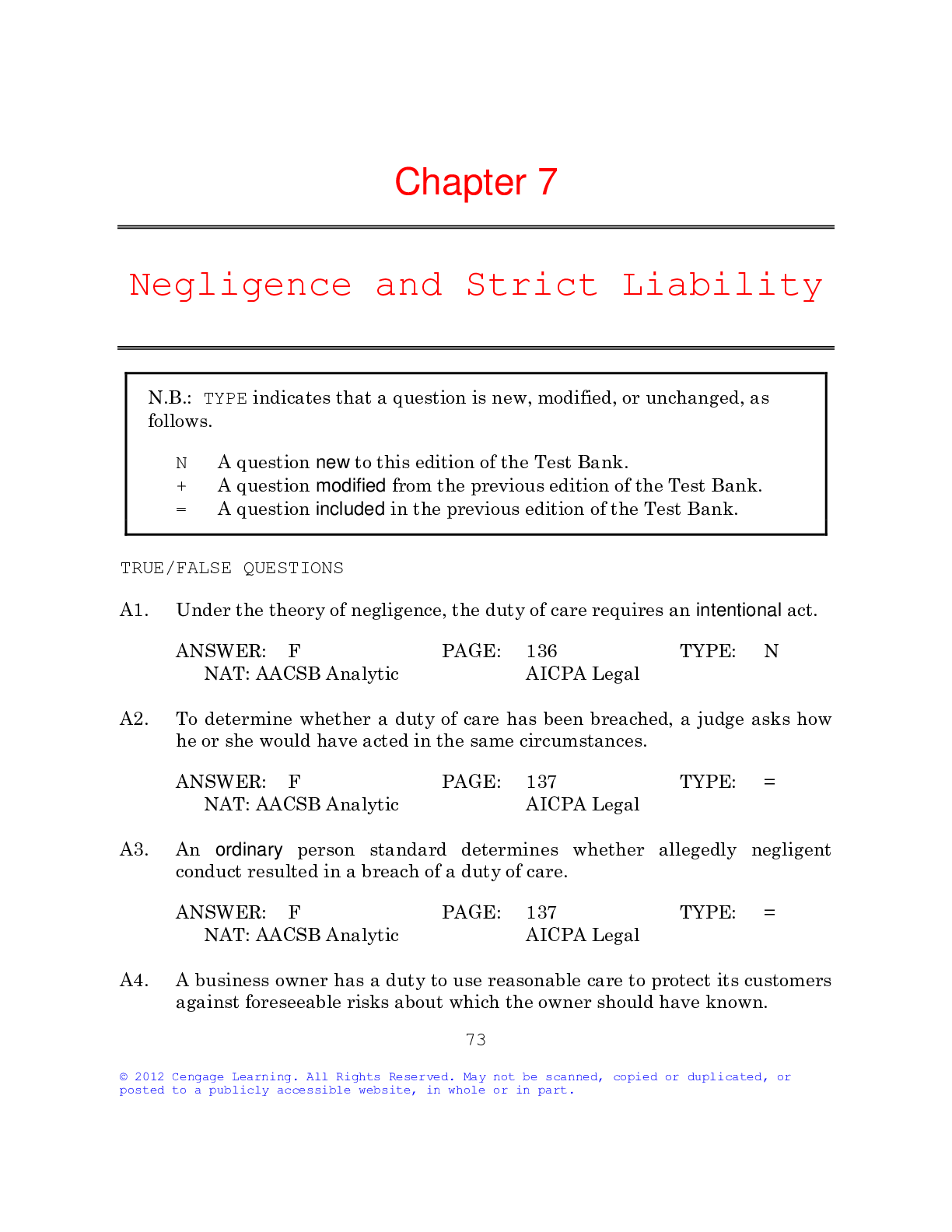
Buy this document to get the full access instantly
Instant Download Access after purchase
Buy NowInstant download
We Accept:

Reviews( 0 )
$8.00
Can't find what you want? Try our AI powered Search
Document information
Connected school, study & course
About the document
Uploaded On
Dec 08, 2019
Number of pages
16
Written in
All
Additional information
This document has been written for:
Uploaded
Dec 08, 2019
Downloads
0
Views
172




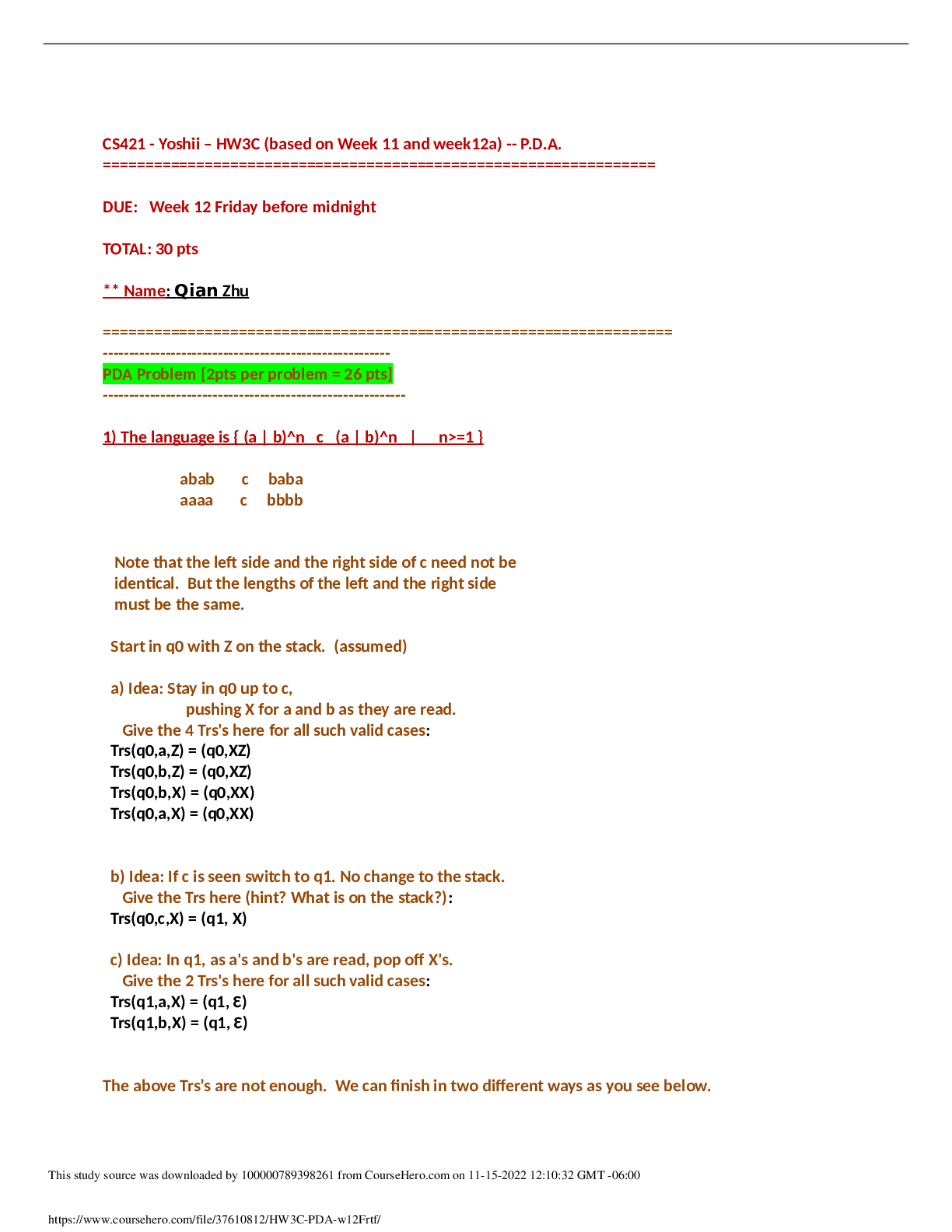


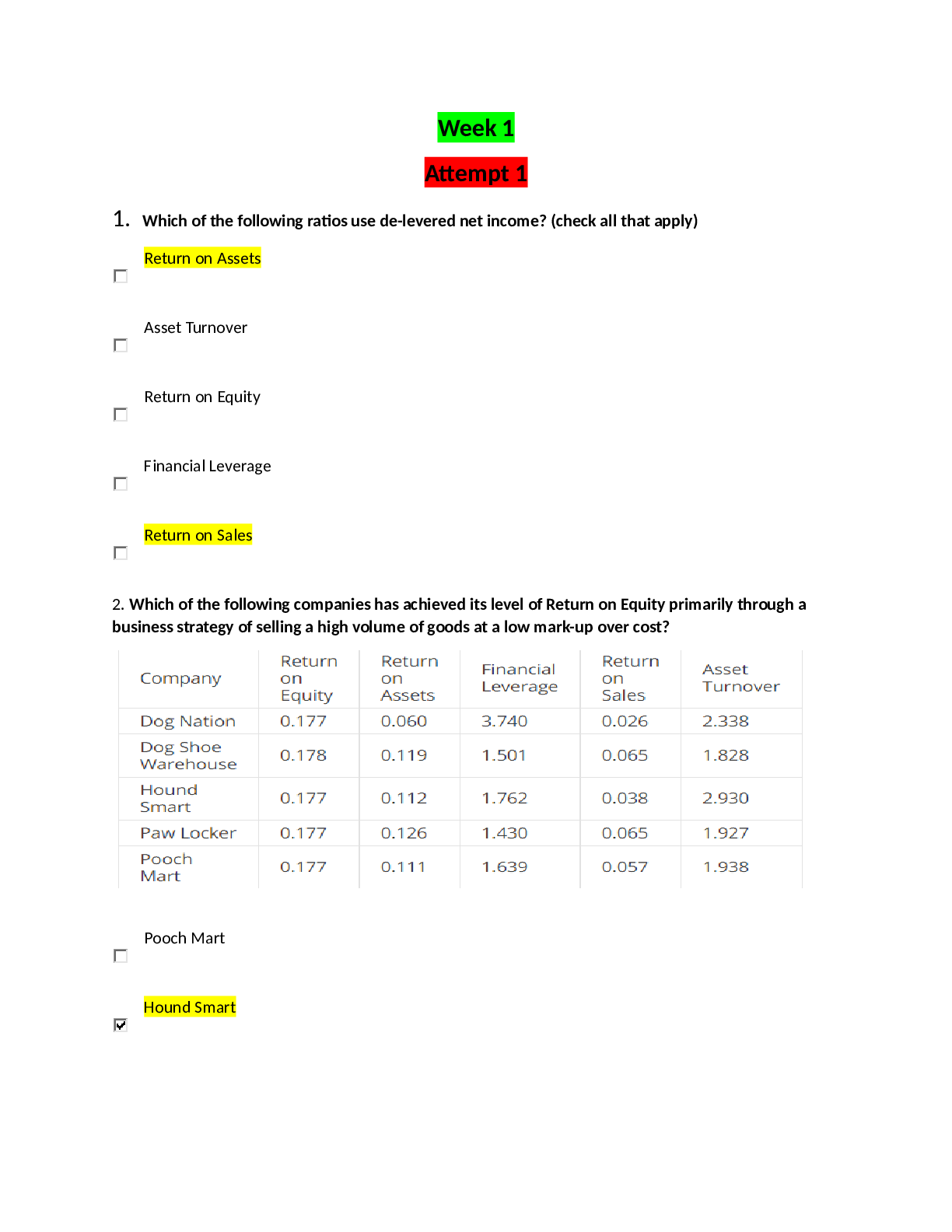
.png)
.png)
.png)
.png)
.png)
